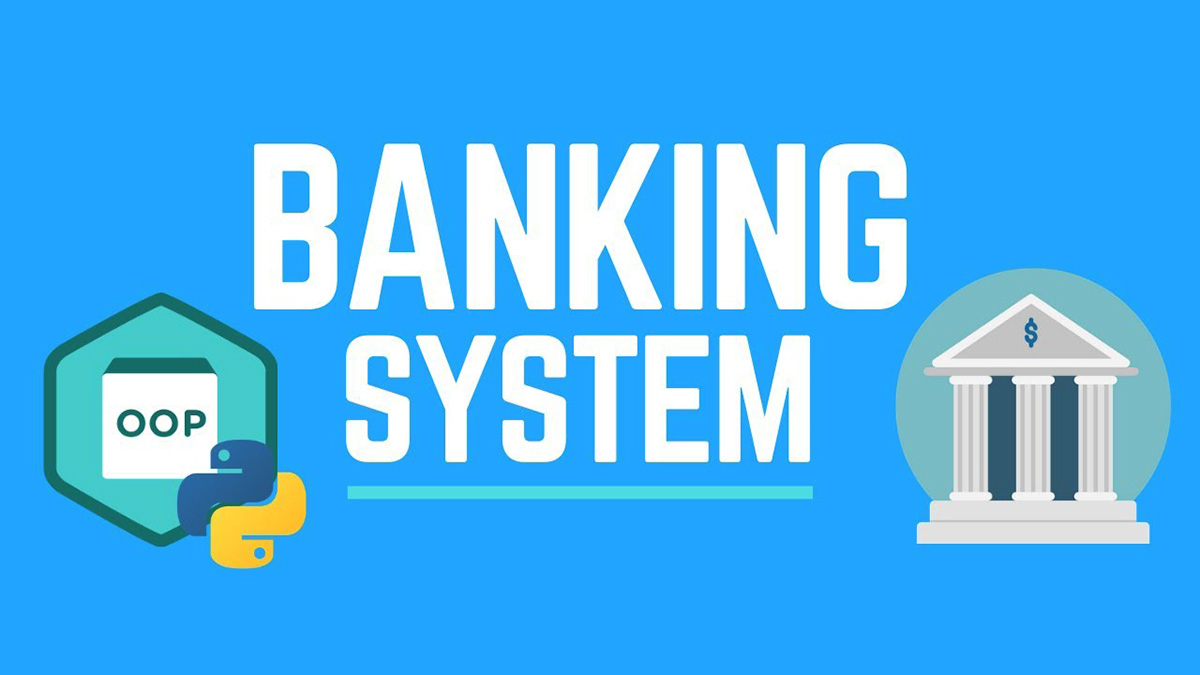

Finance
How To Create Cryptocurrency Exchange
Published: October 4, 2023
Learn how to create your own cryptocurrency exchange and enter the world of finance with this comprehensive guide.
(Many of the links in this article redirect to a specific reviewed product. Your purchase of these products through affiliate links helps to generate commission for LiveWell, at no extra cost. Learn more)
Table of Contents
- Introduction
- Understanding Cryptocurrency Exchanges
- Essentials for Setting Up a Cryptocurrency Exchange
- Choosing the Right Technology Stack
- Regulatory Compliance and Legal Considerations
- Creating an Account and User Management System
- Implementing Security Measures
- Designing a User-Friendly Interface
- Integrating Payment Gateways
- Managing Liquidity and Order Matching
- Launching and Marketing Your Cryptocurrency Exchange
- Conclusion
Introduction
In recent years, cryptocurrencies have revolutionized the financial industry, offering a decentralized and secure alternative to traditional forms of currency. As the popularity of digital currencies continues to soar, the demand for cryptocurrency exchanges has grown exponentially.
A cryptocurrency exchange is an online platform that allows users to trade a variety of digital currencies, such as Bitcoin, Ethereum, and Litecoin, with other users or convert them into fiat currencies like the US dollar or Euro. These exchanges act as intermediaries, facilitating the buying, selling, and storing of cryptocurrencies.
If you’re interested in creating your own cryptocurrency exchange, it’s crucial to understand the essentials involved in the process. From the technology stack required to the legal and regulatory considerations, this article will guide you through the step-by-step process of setting up a successful cryptocurrency exchange.
Before diving into the technical aspects, it’s important to note that launching a cryptocurrency exchange involves significant effort, resources, and planning. It’s essential to conduct thorough research, assess market demand, and evaluate the competition before embarking on this venture.
Furthermore, it’s crucial to stay updated with the ever-evolving regulatory landscape surrounding cryptocurrencies. Compliance with laws and regulations is vital to ensure the legality and security of your exchange.
With the groundwork laid, let’s delve deeper into the essential components of creating an efficient and secure cryptocurrency exchange. From choosing the right technology stack to designing a user-friendly interface, we will cover all the necessary steps to help you build a successful exchange in this rapidly growing industry.
Understanding Cryptocurrency Exchanges
Cryptocurrency exchanges are online platforms that enable users to buy, sell, and trade digital currencies. These exchanges serve as intermediaries, connecting buyers and sellers and facilitating transactions securely and efficiently.
There are different types of cryptocurrency exchanges, each offering distinct features and functionalities. The main types include:
- Centralized Exchanges: These are the most common type of exchanges, where a trusted third-party entity manages the exchange and holds users’ funds. They act as intermediaries and facilitate the trading of cryptocurrencies. Examples include Coinbase, Binance, and Kraken.
- Decentralized Exchanges (DEX): Unlike centralized exchanges, DEX operates on a peer-to-peer network, eliminating the need for a middleman. Users retain control of their funds, and transactions are executed directly between traders through smart contracts. Examples of DEX platforms include Uniswap and PancakeSwap.
- Hybrid Exchanges: Hybrid exchanges combine the features of centralized and decentralized exchanges. They offer the liquidity and ease of use of centralized exchanges while allowing users to retain control of their funds. These exchanges often utilize decentralized order books to match traders. Examples include Bitfinex and KuCoin.
When using a cryptocurrency exchange, users can place different types of orders to buy or sell cryptocurrencies. Common order types include market orders, limit orders, and stop orders. Market orders are executed immediately at the current market price, while limit orders allow users to specify the maximum or minimum price at which they are willing to buy or sell. Stop orders are triggered when the price reaches a specific threshold, activating a market or limit order.
Cryptocurrency exchanges provide various trading pairs, allowing users to trade one cryptocurrency for another or exchange cryptocurrencies for fiat currencies. Common trading pairs include Bitcoin to Ethereum, Ethereum to USD, and Litecoin to Bitcoin, among others.
It’s important to note that while cryptocurrency exchanges provide a convenient platform for trading, they also carry risks. These risks include price volatility, security vulnerabilities, and the potential for scams. It’s essential to conduct thorough research, choose reputable exchanges, and follow security best practices to mitigate these risks.
Now that we have a solid understanding of cryptocurrency exchanges, let’s delve into the essentials of setting up a successful exchange.
Essentials for Setting Up a Cryptocurrency Exchange
Setting up a cryptocurrency exchange requires careful planning and consideration of several key factors. Here are the essential elements you need to focus on to ensure a successful launch:
- Business Plan: Start by developing a comprehensive business plan that outlines your exchange’s mission, target market, revenue streams, and competitive analysis. This will serve as your roadmap throughout the development and launch process.
- Legal and Regulatory Compliance: Cryptocurrency exchanges operate in a highly regulated industry. Ensure that you comply with all applicable laws and regulations, including Know Your Customer (KYC) and Anti-Money Laundering (AML) requirements. Consult with legal experts to navigate the complex regulatory landscape.
- Technology Infrastructure: Choose a reliable and scalable technology infrastructure to support your exchange’s operations. This includes servers, databases, and network infrastructure capable of handling high volumes of trades and ensuring the security and integrity of user data.
- Robust Security Measures: Security is paramount in the cryptocurrency industry. Implement industry-standard security measures such as two-factor authentication, encryption, and cold storage for funds. Conduct regular security audits to identify and mitigate vulnerabilities.
- Liquidity: Building liquidity is essential for attracting traders to your exchange. Establish partnerships with liquidity providers to ensure there are enough buy and sell orders to match traders’ needs. Consider offering incentives such as reduced fees or bonuses to attract liquidity providers.
- User-Friendly Interface: Design an intuitive and user-friendly interface that provides a seamless trading experience. Include features such as real-time market data, order books, and easy navigation for users to trade and manage their accounts effortlessly.
- Payment Gateways: Integrate secure and reliable payment gateways to enable users to deposit and withdraw funds easily. Support a range of payment options, including bank transfers, credit cards, and popular cryptocurrencies.
- Customer Support: Offer timely and responsive customer support to address users’ queries and concerns. Consider integrating a ticketing system or live chat feature to provide efficient support and build trust with your users.
- Comprehensive Testing: Thoroughly test your exchange’s functionality and security features before launching. Conduct simulated trading scenarios and security penetration tests to identify and fix any issues.
- Marketing and Promotion: Develop a marketing strategy to create awareness and attract users to your exchange. Utilize digital marketing channels, social media platforms, and partnerships with influencers in the cryptocurrency industry.
Setting up a cryptocurrency exchange requires careful planning, technical expertise, and regulatory compliance. By paying attention to these essentials, you’ll be on your way to launching a successful and reputable exchange in the fast-evolving world of cryptocurrencies.
Choosing the Right Technology Stack
Building a robust and efficient cryptocurrency exchange requires selecting the right technology stack that can handle high volumes of trading activity while ensuring security and scalability. Here are the key components of a solid technology stack for a cryptocurrency exchange:
- Blockchain: Choose a reliable and proven blockchain platform to underpin your exchange. Bitcoin and Ethereum are the most popular choices, offering robust security and extensive developer communities. Consider factors such as transaction speed, scalability, and smart contract capabilities when selecting the blockchain platform.
- Backend Development: For the backend development of your exchange, you can opt for programming languages such as Java, Python, or Node.js. These languages offer scalability, flexibility, and extensive libraries and frameworks to facilitate development.
- Database Management: Select a secure and scalable database management system to store and manage user data and transaction records. Options include SQL databases like PostgreSQL or MySQL, or NoSQL databases like MongoDB or Cassandra, depending on the specific requirements of your exchange.
- API Integration: Implement robust APIs (Application Programming Interfaces) to enable seamless integration with blockchain networks, payment gateways, liquidity providers, and other third-party services. APIs allow for smooth data flow and enable users to interact with the exchange’s functionality.
- Frontend Development: Choose modern frontend technologies such as HTML, CSS, and JavaScript frameworks like React or AngularJS to create an intuitive and user-friendly interface. A responsive and visually appealing frontend is crucial for attracting and retaining users.
- Order Matching Engine: The order matching engine is the core technology that matches buy and sell orders on the exchange. Implement a high-performance and efficient order matching algorithm that can handle large volumes of trades in real-time.
- Security and Encryption: Ensure that your technology stack includes robust security measures such as SSL encryption, two-factor authentication, and secure wallet management. Implement best practices to protect user funds and sensitive information.
- Cloud Infrastructure: Consider using cloud-based infrastructure services such as Amazon Web Services (AWS) or Google Cloud Platform (GCP) to enhance scalability and reliability. Cloud hosting allows for easy management and expansion of resources as your exchange grows.
- Analytics and Reporting: Incorporate analytics and reporting tools to gain insights into trading patterns, user behavior, and market trends. These tools enable you to make informed decisions, optimize performance, and implement strategies to enhance user experience.
- Continuous Monitoring and Support: Implement monitoring tools to ensure the smooth operation of your exchange. Real-time monitoring can provide alerts for suspicious activities, system failures, or security breaches. Additionally, provide timely support to address user issues and maintain a high-quality trading experience.
Choosing the right technology stack is crucial for the success of your cryptocurrency exchange. Consider the scalability, security, and performance requirements of your exchange and the expertise of your development team. Regular updates and maintenance are also essential to keep your exchange up-to-date with the latest industry standards and security protocols.
Regulatory Compliance and Legal Considerations
When setting up a cryptocurrency exchange, it is crucial to ensure compliance with the legal and regulatory framework surrounding the cryptocurrency industry. Adhering to these requirements helps protect your exchange from legal issues and builds trust among users. Here are the key regulatory compliance and legal considerations to keep in mind:
- Know Your Customer (KYC) and Anti-Money Laundering (AML) Policies: Implement robust KYC and AML procedures to verify the identity of your users and prevent illegal activities such as money laundering or financing of terrorism. This typically involves collecting and verifying user identification documents, conducting risk assessments, and maintaining thorough transaction records.
- Data Protection and Privacy: Ensure compliance with data protection and privacy regulations, such as the General Data Protection Regulation (GDPR), to safeguard users’ personal information. Implement security measures to protect data against unauthorized access or breaches.
- License and Registration: Research and understand the licensing and registration requirements specific to your jurisdiction. Some countries require cryptocurrency exchanges to obtain licenses or register with financial regulatory authorities before operating legally.
- Localized Regulations: Be aware of the specific regulations and restrictions that may vary from country to country. Compliance requirements may include restrictions on specific cryptocurrencies, trading activities, or user access from certain jurisdictions.
- Taxation: Understand the tax obligations related to cryptocurrency exchanges in your jurisdiction. Consult with tax professionals to ensure compliance with tax reporting and payment requirements.
- Security and Risk Mitigation: Implement comprehensive security measures to protect user funds and personal data. Conduct regular security audits, penetration tests, and vulnerability assessments to identify and address potential risks and vulnerabilities.
- Legal Documentation and Terms of Service: Have proper legal documentation in place, including user agreements, terms of service, and privacy policies. Consult with legal professionals to draft these documents to protect your exchange and clearly define the rights and responsibilities of users.
- Financial Services Regulations: Depending on the services you offer, you may need to comply with specific financial services regulations. This may include regulations related to custody of funds, escrow services, or financial transaction reporting.
- Stay Informed and Adapt: The legal and regulatory landscape can evolve rapidly in the cryptocurrency industry. Stay updated with legislative changes and industry best practices to ensure ongoing compliance. Join industry associations and engage with legal experts to stay informed.
- Legal Counsel: Engage legal counsel with experience in the cryptocurrency industry to guide you through the legal considerations and ensure compliance with relevant regulations.
By understanding and adhering to the legal and regulatory requirements, you can establish a reputable and compliant cryptocurrency exchange that inspires trust and confidence among users. Failure to comply with regulatory obligations can result in legal consequences and reputational damage, so it is imperative to prioritize regulatory compliance from the outset.
Creating an Account and User Management System
Creating a robust and efficient account and user management system is essential for ensuring smooth operations and a seamless user experience on your cryptocurrency exchange. Here are the key considerations for developing an effective account and user management system:
- User Registration: Implement a user registration process that collects basic information for account creation, such as email address, username, and password. Consider implementing multi-factor authentication to enhance the security of user accounts.
- Know Your Customer (KYC) Verification: Integrate a KYC verification process into your account creation workflow to verify the identity of your users. This may include collecting and verifying government-issued identification documents, proof of address, and other relevant information.
- User Roles and Permissions: Define different user roles and permissions to manage access levels and functionalities within the exchange. Assign roles such as administrators, traders, or customer support staff, each with specific permissions based on their responsibilities.
- Profile Management: Allow users to manage their profiles, including updating personal information, adding or removing payment methods, and enabling or disabling security features such as two-factor authentication.
- Account Security: Implement robust security measures to protect user accounts. This includes features such as strong password requirements, password hashing, encryption of sensitive data, and automated logout sessions for enhanced security.
- Wallet Integration: Integrate cryptocurrency wallets into the user management system to allow users to securely store and manage their funds. Ensure that wallets are properly secured and include features such as multi-signature wallets for added protection.
- User Support: Provide a support system for users to address their queries and concerns. This may include a ticketing system, live chat support, or a dedicated customer support team to assist users in case of any issues or technical difficulties.
- Transaction History: Maintain a comprehensive transaction history for each user, including details such as trade history, deposits, withdrawals, and account balance. Users should have the ability to view and export their transaction history for record-keeping purposes.
- Compliance and Audit Trails: Keep track of user activities and maintain audit trails for compliance and security purposes. This helps monitor potential suspicious activities and provides a trail of user actions in case of any investigations or dispute resolution.
- Data Protection and Privacy: Ensure compliance with data protection and privacy regulations by implementing robust data security measures. Encrypt user data, adhere to data retention policies, and provide transparent privacy policies to assure users of the safety and privacy of their information.
Creating an effective account and user management system is crucial for the success of your cryptocurrency exchange. Prioritize security, user experience, and regulatory compliance to build trust and attract a loyal user base. Regularly update and enhance your user management system based on user feedback, industry trends, and emerging technologies to stay at the forefront of the rapidly evolving cryptocurrency landscape.
Implementing Security Measures
Implementing robust security measures is of utmost importance when it comes to operating a cryptocurrency exchange. Given the potential risks and vulnerabilities in the digital landscape, prioritizing security ensures the protection of user funds and data. Here are key security measures to consider when setting up your cryptocurrency exchange:
- Encryption: Implement encryption protocols to safeguard sensitive user data, including personal information and transaction details. Use industry-standard encryption algorithms to protect data from unauthorized access.
- Two-Factor Authentication (2FA): Enable 2FA to add an extra layer of security to user accounts. Users will need to provide a second authentication factor, such as a one-time password or fingerprint, in addition to their login credentials.
- Secure Wallet Management: Implement secure wallet management practices to protect users’ digital assets. This includes using multi-signature wallets, which require multiple keys to authorize transactions, and maintaining a secure cold storage solution to store a majority of the funds offline.
- Continuous Monitoring: Employ real-time monitoring tools to detect and mitigate potential security breaches. Monitor suspicious activities, login attempts, and unusual transaction patterns to identify and respond to security threats promptly.
- Regular Security Audits: Conduct regular security audits and vulnerability assessments to identify and address any potential vulnerabilities in your exchange’s infrastructure or codebase. Engage security experts and penetration testers to evaluate the resilience of your security measures.
- Penetration Testing: Perform periodic penetration testing to simulate real-world attack scenarios and identify weak points in your system’s defenses. This helps identify potential vulnerabilities that could be exploited by hackers and allows you to proactively address them.
- Secure Development Practices: Follow secure coding principles throughout the development process. Implement secure coding standards, conduct code reviews, and regularly update dependencies and libraries to ensure your exchange’s codebase is resilient to security threats.
- Employee Education and Training: Provide comprehensive training to employees regarding security best practices and protocols. Educate them about phishing attempts, social engineering, and other common security threats to minimize the risk of human error.
- Regular Software Updates: Keep your exchange’s software and infrastructure up to date with the latest security patches and updates. Regularly update operating systems, servers, and software dependencies to protect against known vulnerabilities.
- Disaster Recovery and Business Continuity: Implement comprehensive disaster recovery and business continuity plans to ensure that your exchange can quickly recover from potential security incidents or system failures. Regularly backup data and test backup restoration procedures to ensure data integrity.
- Third-Party Security Audits: Engage reputable third-party security firms to perform independent security audits and penetration testing. Their expertise and unbiased perspective can help uncover any potential security weaknesses that may have been missed internally.
By implementing robust security measures, you can protect your cryptocurrency exchange from potential threats and provide users with a secure platform to trade and store their digital assets. Regularly review and update your security measures as new threats emerge and always stay vigilant in safeguarding your users’ trust and investments.
Designing a User-Friendly Interface
Designing a user-friendly interface is crucial for the success of your cryptocurrency exchange. A well-designed interface enhances user experience, improves engagement, and fosters trust among users. Here are key factors to consider when designing the interface of your cryptocurrency exchange:
- Simplicity and Intuitiveness: Keep the user interface simple and intuitive, ensuring easy navigation and seamless interaction. Use clear labels, consistent design elements, and logical information hierarchy to guide users through the platform.
- Responsive Design: Optimize the design to be responsive across different devices and screen sizes. The interface should adapt seamlessly to desktops, laptops, tablets, and mobile devices to provide a consistent experience for users.
- Clear Information Display: Present information clearly and concisely, especially when it comes to trading pairs, order books, user balances, and transaction history. Utilize charts, graphs, and data visualizations to enhance the readability of complex information.
- Real-Time Market Data: Provide users with real-time market data, including prices, trading volumes, and order book updates. This allows traders to make timely and informed decisions while navigating the exchange.
- Interactive Trading Tools: Incorporate interactive trading tools such as candlestick charts, price trend indicators, and technical analysis tools. These features enhance the trading experience by giving users the ability to conduct in-depth analysis and make informed trading decisions.
- Order Placement and Management: Offer a seamless order placement process with clear instructions and intuitive controls. Enable users to manage and cancel their orders easily, view open orders, and set stop-loss or take-profit levels.
- Account and Profile Management: Design an intuitive interface for users to manage their accounts, including settings, deposit and withdrawal options, and KYC verification. Make it straightforward for users to update personal information and security settings.
- Support and FAQ Section: Include a well-organized support section or FAQ page to address common user queries. Provide clear and concise answers to frequently asked questions related to account security, trading, and platform usage.
- Notifications and Alerts: Implement a notification system to keep users informed about important updates, such as order executions, deposit confirmations, or security alerts. Allow users to customize their notification preferences to suit their trading style and needs.
- Accessibility: Ensure your interface meets accessibility standards, including proper color contrast, keyboard navigation, and screen reader compatibility. Make your exchange accessible to users with different abilities to broaden your user base.
- User Testing and Feedback: Conduct user testing and seek feedback from traders to identify usability issues and areas for improvement. Collect qualitative and quantitative feedback to continually refine and optimize the interface based on user preferences.
A user-friendly interface is essential for attracting and retaining users on your cryptocurrency exchange. By prioritizing simplicity, responsiveness, and intuitive design, you can create a positive trading experience that encourages user engagement and loyalty.
Integrating Payment Gateways
Integrating payment gateways into your cryptocurrency exchange is crucial for enabling seamless and secure deposit and withdrawal processes. Payment gateways facilitate the conversion between traditional fiat currencies and cryptocurrencies, allowing users to fund their accounts and withdraw funds easily. Here are the key considerations when integrating payment gateways:
- Choose Reliable Payment Gateways: Select reputable payment gateway providers with a proven track record in the industry. Ensure that the payment gateway supports a wide range of payment options, including credit cards, bank transfers, and popular cryptocurrencies.
- Security and Compliance: Prioritize security by choosing payment gateways that comply with industry security standards, such as PCI-DSS (Payment Card Industry Data Security Standard). Verify that the payment gateway provider has robust security measures in place to protect sensitive user information.
- Know Your Customer (KYC) Compliance: Ensure that the payment gateway provider follows KYC procedures to prevent money laundering and other illicit activities. This helps maintain regulatory compliance and protects both your exchange and your users.
- Automated Deposits and Withdrawals: Implement automated deposit and withdrawal processes to provide users with instant access to their funds. Automate the processing of deposits and withdrawals, ensuring they are executed efficiently and securely.
- Multi-Currency Support: Offer multi-currency support to accommodate users from different countries and enable transactions in various fiat currencies. Ensure that the payment gateway can handle currency conversions and provide real-time exchange rates to users.
- Liquidity Management: Integrate payment gateways that have liquidity management capabilities. This allows you to efficiently manage user deposits and withdrawals while maintaining adequate liquidity levels to fulfill user demands.
- Transparent Transaction Fees: Provide clear information about transaction fees associated with deposits and withdrawals. Transparency regarding fees promotes trust and helps users make informed decisions regarding their transactions.
- Secure Payment Verification: Implement a secure payment verification process to prevent fraudulent activities. Use advanced fraud detection mechanisms and risk management tools to minimize the risk of chargebacks or other payment-related issues.
- Seamless User Experience: Ensure that the payment gateway integration offers a seamless user experience with a simple and intuitive interface. Users should be able to initiate transactions smoothly and receive real-time notifications regarding the status of their deposits and withdrawals.
- Integration Support: Select payment gateways that provide comprehensive integration support, including developer documentation, APIs, and technical assistance. A smooth integration process helps expedite the launch of your cryptocurrency exchange.
- Efficient Customer Support: Evaluate the customer support provided by the payment gateway provider. Efficient and responsive customer support ensures timely resolution of any issues related to transactions, payments, or user accounts.
Integrating secure and reliable payment gateways is essential for enabling smooth transactions on your cryptocurrency exchange. By prioritizing security, compliance, and user experience, you can provide users with a seamless and convenient payment process, increasing their satisfaction and trust in your platform.
Managing Liquidity and Order Matching
Efficiently managing liquidity and order matching is crucial for the success of your cryptocurrency exchange. Liquidity ensures that there are enough buy and sell orders on your platform, allowing traders to execute trades seamlessly. Here are key considerations for managing liquidity and order matching:
- Liquidity Providers: Establish partnerships with reputable liquidity providers who can offer a sufficient pool of liquidity for your exchange. Liquidity providers ensure that there are enough buyers and sellers to match orders, thus facilitating smooth trading.
- Market Making: Consider implementing a market-making strategy where your exchange provides liquidity by placing buy and sell orders on the platform. This helps attract traders and enhances the liquidity pool.
- Order Books: Display order books on your exchange interface, allowing traders to view all buy and sell orders in real-time. Order books provide transparency and enable traders to make informed decisions based on the current market depth.
- Order Matching Engine: Implement a high-performance order matching engine that can handle a large number of simultaneous orders in real-time. The order matching engine matches buy and sell orders efficiently based on predetermined parameters, such as price and time priority.
- Trade Execution Speed: Optimize the trade execution speed on your platform to minimize latency and ensure fast and accurate order matching. Reduced latency enhances the user experience and attracts traders who value swift execution.
- Market and Limit Orders: Support both market and limit order types. Market orders are executed immediately at the best available price, while limit orders allow traders to specify a particular price at which they are willing to buy or sell.
- Partial Fills: Implement functionality for partial fills, which allow orders to be executed in multiple smaller trades if there is insufficient liquidity to fill the entire order at once. Partial fills increase the likelihood of executing trades and improve liquidity management.
- Taker and Maker Fees: Consider implementing a fee structure that differentiates between takers and makers. Takers are those who place market orders and “take” liquidity from the order book, while makers place limit orders and “make” liquidity by adding orders to the book. Different fees incentivize liquidity provision and promote market activity.
- Advanced Order Types: Consider offering advanced order types such as stop orders or trailing stop orders. These types of orders help traders manage risk and automatically execute trades based on specific market conditions.
- Market Surveillance: Implement market surveillance tools to monitor trading activities and identify any manipulative or suspicious behavior. Regularly monitor the order book for any irregularities and take appropriate actions to maintain a fair and transparent trading environment.
- Regular Market Analysis: Stay informed about the market conditions and liquidity trends. Analyze trading volumes, bid-ask spreads, and order book depth to understand liquidity patterns and adjust your strategies accordingly.
Efficiently managing liquidity and order matching is crucial for creating a vibrant and active trading environment on your cryptocurrency exchange. Through strategic partnerships with liquidity providers, implementing robust order matching algorithms, and continuously monitoring the market, you can attract traders and provide them with a seamless trading experience.
Launching and Marketing Your Cryptocurrency Exchange
Launching your cryptocurrency exchange is an exciting milestone, but to attract users and gain traction in the competitive market, a strategic marketing plan is essential. Here are key steps to successfully launch and market your cryptocurrency exchange:
- Brand Identity: Develop a strong brand identity that reflects the values and vision of your exchange. Create a compelling logo, establish brand colors and typography, and craft a unique brand voice to differentiate yourself in the market.
- Website and Landing Page: Create an informative and visually appealing website and landing page that clearly communicates your exchange’s features, benefits, and user experience. Include an intuitive user interface and easy-to-understand navigation to attract potential users.
- Content Marketing: Develop high-quality content, such as blog articles, educational resources, and tutorials related to cryptocurrencies and trading. Publish this content on your website and promote it through various channels to establish your exchange as a trusted source of information.
- Social Media Presence: Leverage social media platforms to engage with potential users. Maintain active profiles on platforms such as Twitter, Facebook, LinkedIn, and Reddit to share updates, news, and engage in conversations with the cryptocurrency community.
- Influencer Partnerships: Collaborate with influential figures in the cryptocurrency industry to promote your exchange. Engage with key opinion leaders, thought leaders, and influencers who can amplify your message and reach a wider audience.
- Digital Advertising: Utilize digital advertising platforms, such as Google Ads or social media ads, to reach a targeted audience of potential traders. Create compelling ad campaigns that highlight the unique features and benefits of your exchange.
- Affiliate Programs: Launch an affiliate program to incentivize users and partners to refer new traders to your exchange. Provide attractive referral bonuses or commission structures to encourage active promotion of your platform.
- Email Marketing: Build an email list of interested users and traders who have shown interest in your exchange. Regularly send them newsletters, updates, and exclusive offers to keep them engaged and informed about new features, promotions, and market trends.
- Community Engagement: Engage with the cryptocurrency community by actively participating in forums, online communities, and relevant social media groups. Answer questions, provide valuable insights, and position yourself as an authority in the space.
- Public Relations: Collaborate with media outlets, bloggers, and journalists who cover the cryptocurrency industry. Provide them with press releases, industry insights, and exclusive interviews to generate positive media coverage and increase brand visibility.
- User Referral Programs: Implement a user referral program that rewards active traders for bringing in new users to your exchange. Offer incentives such as reduced fees, bonus trading credits, or other exclusive benefits to encourage existing users to refer their network.
Launching and marketing your cryptocurrency exchange requires a well-rounded strategy that combines branding, digital marketing, community engagement, and partnerships. Continuously refine and evolve your marketing efforts based on user feedback and market trends to continuously attract and retain traders on your platform.
Conclusion
Creating and launching a successful cryptocurrency exchange requires careful planning, technical expertise, and strategic marketing. By understanding the essential components and considerations involved in the process, you can set yourself up for success in this dynamic and rapidly evolving industry.
Starting with a solid business plan and legal compliance framework establishes a strong foundation for your exchange. Selecting the right technology stack and implementing robust security measures are essential for ensuring the integrity and security of user funds and data.
A user-friendly interface and seamless user experience contribute to the success of your exchange. Prioritize simplicity, responsiveness, and clear information display to attract and retain users. Integration of reliable payment gateways and management of liquidity and order matching ensure smooth transactions and a vibrant trading environment.
Once your exchange is ready to launch, effective marketing strategies play a crucial role in attracting users and building trust. Develop a strong brand identity, utilize digital marketing channels and social media platforms, collaborate with influencers, and engage with the cryptocurrency community to create awareness and generate interest in your platform.
Continuously monitor market trends, adapt your strategies, and prioritize user feedback as you refine and improve your exchange. As the cryptocurrency industry evolves, staying agile and keeping up with regulatory changes and emerging technologies will be key to your success.
With careful planning, diligent execution, and a focus on customer satisfaction, you can establish a reputable and thriving cryptocurrency exchange that meets the needs of traders and contributes to the advancement of the cryptocurrency ecosystem.














